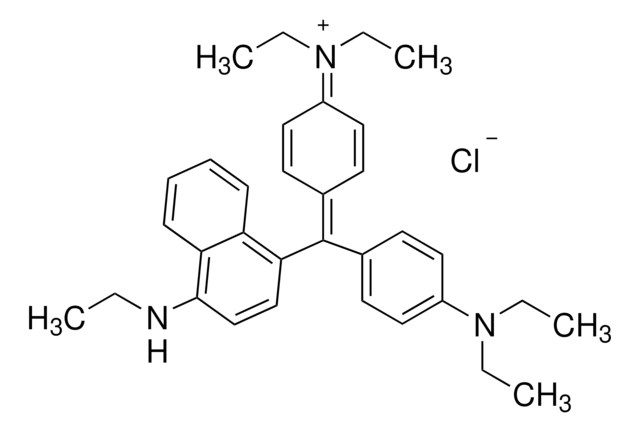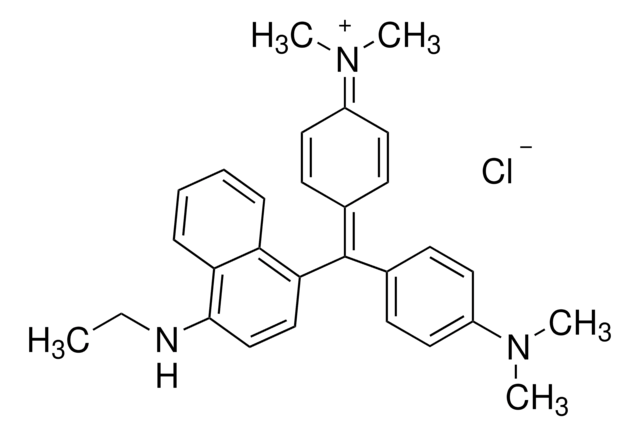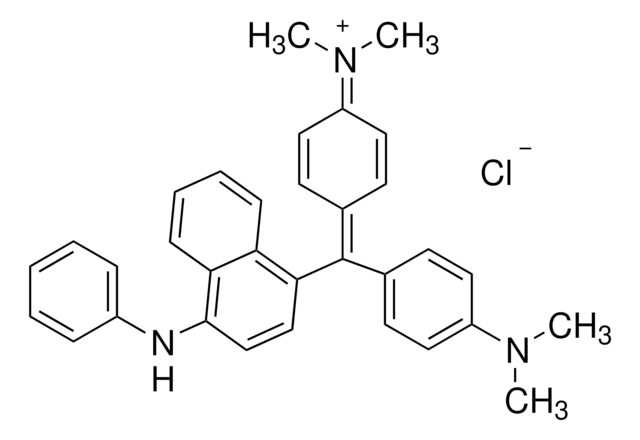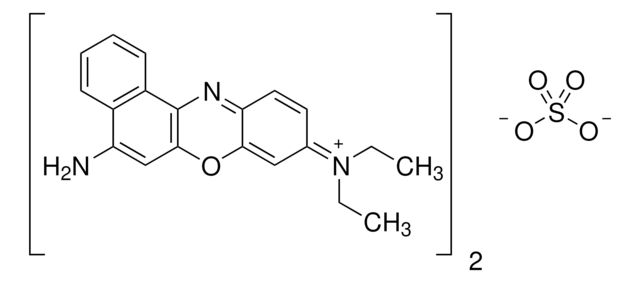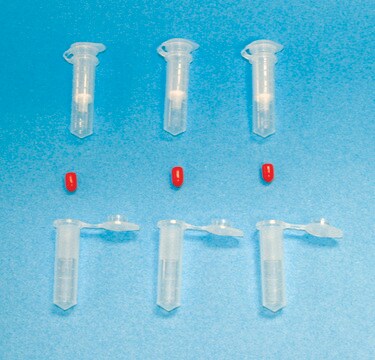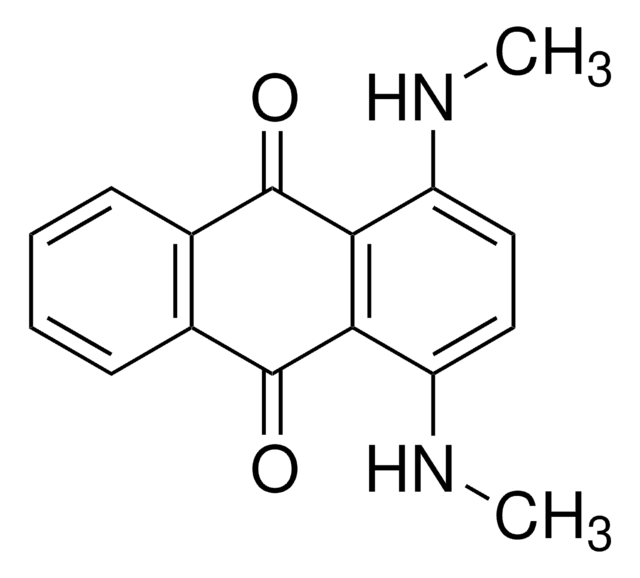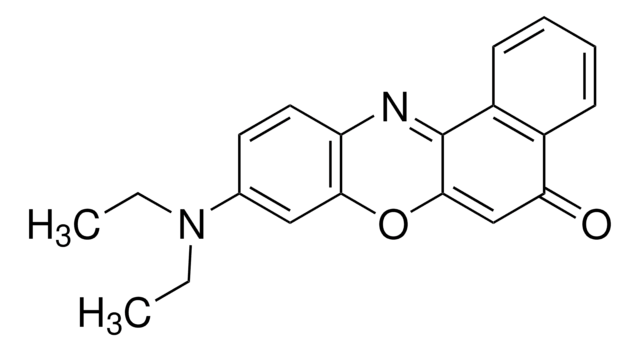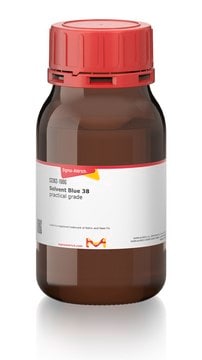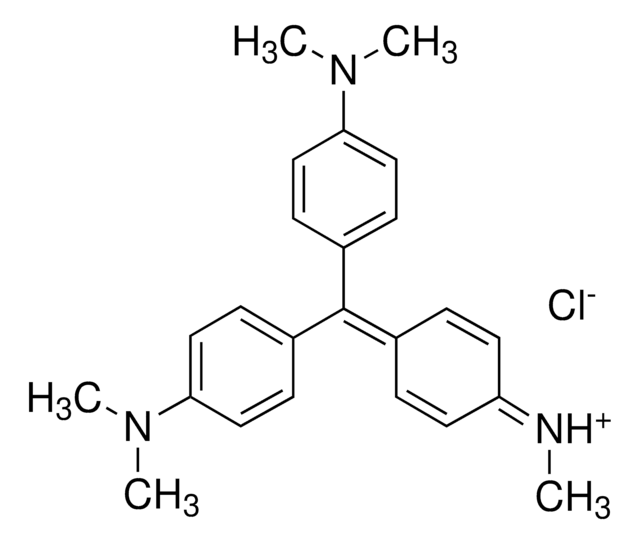230987
Victoria Pure Blue BO
Dye content 90 %
Synonym(s):
Basic Blue 7
About This Item
Recommended Products
form
powder, crystals or chunks
Quality Level
composition
Dye content, 90%
solubility
95% ethanol: 0.1%, blue to very deep blue
λmax
619 nm
application(s)
diagnostic assay manufacturing
hematology
histology
storage temp.
room temp
SMILES string
[Cl-].CCNc1ccc(\C(c2ccc(cc2)N(CC)CC)=C3/C=C\C(C=C3)=[N+](\CC)CC)c4ccccc14
InChI
1S/C33H39N3.ClH/c1-6-34-32-24-23-31(29-13-11-12-14-30(29)32)33(25-15-19-27(20-16-25)35(7-2)8-3)26-17-21-28(22-18-26)36(9-4)10-5;/h11-24H,6-10H2,1-5H3;1H
InChI key
ROVRRJSRRSGUOL-UHFFFAOYSA-N
Looking for similar products? Visit Product Comparison Guide
General description
Signal Word
Danger
Hazard Statements
Precautionary Statements
Hazard Classifications
Acute Tox. 3 Oral - Aquatic Acute 1 - Aquatic Chronic 1 - Eye Dam. 1
Storage Class Code
6.1C - Combustible acute toxic Cat.3 / toxic compounds or compounds which causing chronic effects
WGK
WGK 3
Flash Point(F)
Not applicable
Flash Point(C)
Not applicable
Personal Protective Equipment
Regulatory Listings
Regulatory Listings are mainly provided for chemical products. Only limited information can be provided here for non-chemical products. No entry means none of the components are listed. It is the user’s obligation to ensure the safe and legal use of the product.
JAN Code
230987-25G:
230987-BULK:
230987-VAR:
Choose from one of the most recent versions:
Already Own This Product?
Find documentation for the products that you have recently purchased in the Document Library.
Customers Also Viewed
Our team of scientists has experience in all areas of research including Life Science, Material Science, Chemical Synthesis, Chromatography, Analytical and many others.
Contact Technical Service